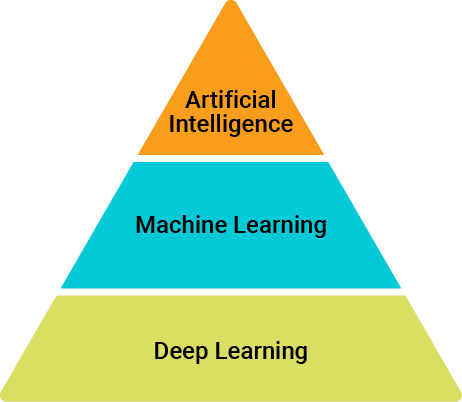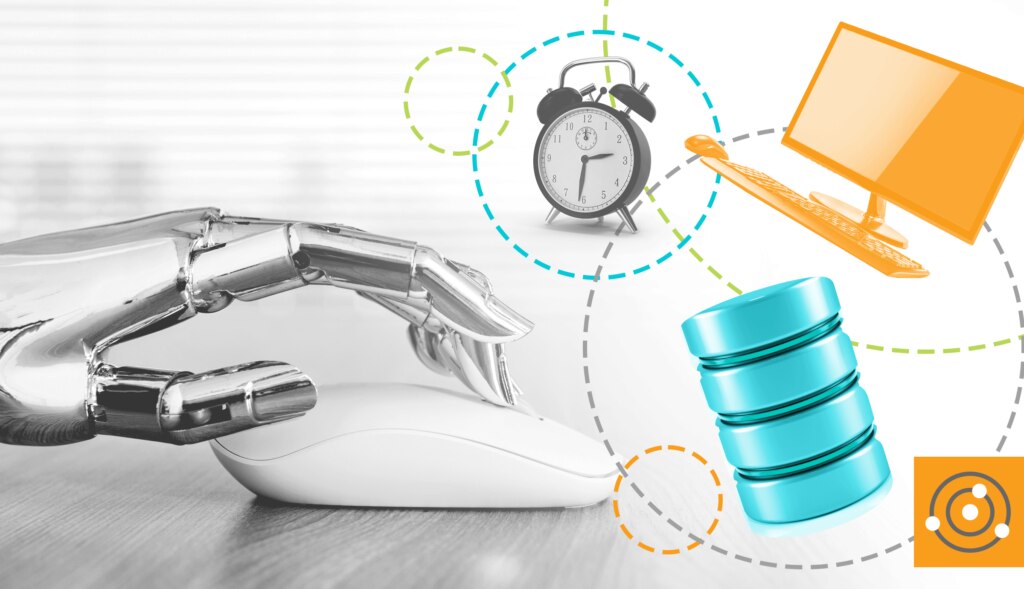Putting machines to work to enhance our everyday lives has been well-ingrained in our society for at least a couple of centuries now. IT workers use machine learning (ML) in their daily work routines, even if they don’t consciously realize it. Automated email alerts, issue escalations, and security patching are just a few examples of how ML has put the systems we rely on to work for us.
Machine Learning: A Powerful Artificial Intelligence Tool
Before we look at how ML can improve IT agility, it’s important to understand the differences between ML and artificial intelligence (AI). As you can see in Figure 1, AI is just the tip of the iceberg when it comes to developing independently thinking systems. Although both AI and ML can be used to improve systems performance and reduce application downtime, these two are often incorrectly used interchangeably.

Figure 1: Machine learning and deep learning are subsets of artificial intelligence
AI-driven tools pave the way for training software to replicate human responses in repetitive tasks through the recognition of patterns in large volumes of data. Algorithms use historical data to adjust actions on tasks without the need for additional layers of programming. As a subset of AI, ML uses historical data to make predictive actions that don’t require explicit programming instructions, providing intelligent processes with valuable inputs to guide automated responses to emerging infrastructure conditions.
Machine Learning Enhances the Performance of Human IT Assets
As amazing a machine as the human brain is, it—unlike the CPU of a machine—sometimes needs a helping hand. ML can provide help where and when it’s needed the most, augmenting the creativity and skills of human IT workers with steady, data-based, intelligent actions. This helps reduce elements of screen fatigue and provides the IT organization its system monitoring on a 24/7 schedule. This is where ML can be introduced, to enhance the performance of IT and human assets.
The machines in your server room can maintain perfect vigilance over your systems and won’t fall asleep at their post. Using ML offers the ability to enhance monitoring to use data to learn how to adjust software operations, freeing your human IT assets to embrace their creativity and their ability to build collaborative relationships to improve efficiencies through innovation. This, in turn, enables ML itself to become smarter through better algorithms and data, creating a continuous cycle of IT improvement.
Software Providers Have Taken Notice
Network and systems monitoring is a perfect fit for AI-automated tasks due to the need for
data-driven performance analysis for anomaly detection and by providing IT staff with a focused direction to perform necessary remediation. Some common points of interest using ML for risk management of infrastructures are intelligent anomaly detection, improved data security monitoring, and correlation of complex data across multiple systems or database farms. These offer improvements in database performance monitoring and more productive business users.
As with any emerging technology deployed to add efficiencies into IT processes, it may be some time before IT software providers notice the potential ability of using ML in managing infrastructures. Innovative ML-based monitoring tools are slowly emerging in the market, which will in the future present IT organizations with effective ML-based solutions. But several solutions can be examined today to illustrate the promise of AI intelligence for tomorrow.
Database Performance Analyzer (DPA) Anomaly Detection
Database Performance Analyzer uses
anomaly detection via ML algorithms to predict future wait times and to monitor current system status. An established database performance baseline is put into place, with the tool providing nonstop monitoring and alerting should database wait times exceed specified values. The tool provides a single-pane-of-glass interface for live or historical viewing of performance data.
Network Configuration Manager (NCM)
Network Configuration Manager helps automate the deployment and maintenance of standardized network settings across the enterprise. It can apply network configuration standards across the devices of most of the major network players on the market, with limited errors and improved reliability in mind. Also, the tool can perform automated monitoring tasks, from configuration changes to emerging bandwidth anomalies, quickly generating alerts, so your staff can jump into action.
AppOptics
AppOptics is a scalable, SaaS-based monitoring solution for
application performance management (APM). It’s capable of applying distributed monitoring across multiple sites and hybrid environments to provide full-stack visibility into the moving pieces of a network, no matter how complicated the infrastructure. It uses a single-pane-of-glass dashboard to display auto-instrumented service topology maps for pinpointing the root cause of a performance issue before it impacts production.
Loggly
Like AppOptics,
Loggly is a SaaS-based, managed service solution. Loggly uses predictive data analytics and ML-based algorithms to perform log monitoring and analysis across the full IT stack of an organization. Loggly brings logs from all areas of your infrastructure into one place to make it easier to see usage patterns across platforms, with the ability to align these to a historical analysis of the same systems to identify anomalies in behavior. The ability to construct metrics and the use of a single-pane-of-glass dashboard speeds up detection and acceleration processes used toward correcting developing issues in the environment.
Although the tools presented here are vendor-agnostic, many intelligent software tools may be vendor-specific. This will require you to perform some due diligence when examining any intelligence-based tools you wish to use within your own IT stack to avoid creating a potential silo effect on your environment instead of making systems more agile.
Let the Machines Do What They Do Best
Machine learning adds powerful elements of accuracy based on historical data and quicker incident response times when properly employed to automate important monitoring tasks. The ability of AI to use historical data inputs and to apply scripted automated and intelligent responses improves the ability of your IT team to prevent application issues from impacting operations.
Is your organization spending more time reacting to issues than focusing on impactful activities to drive business? Learn how
SolarWinds Observability Self-Hosted (formerly known as Hybrid Cloud Observability) can help make your teams more collaborative and efficient through cross-domain visualizations and automation.








